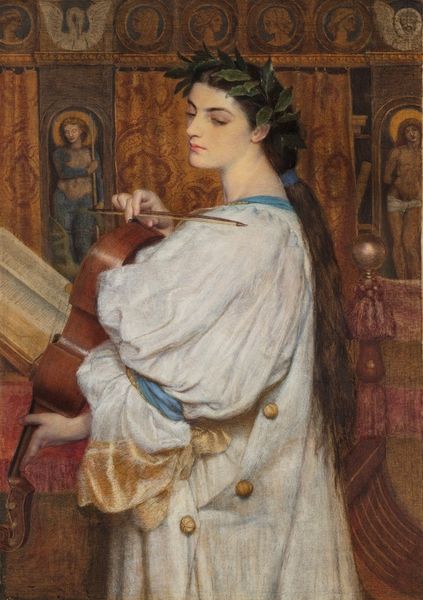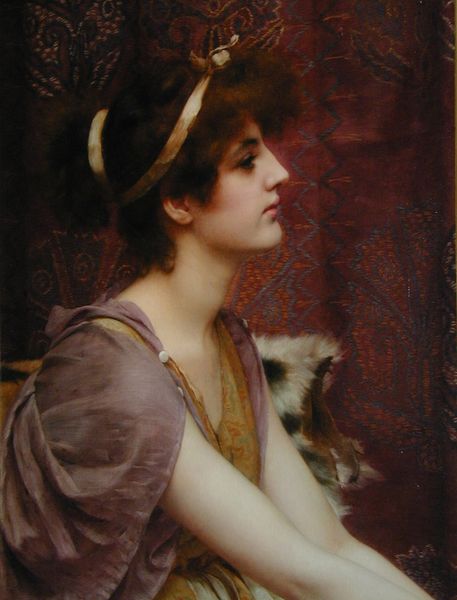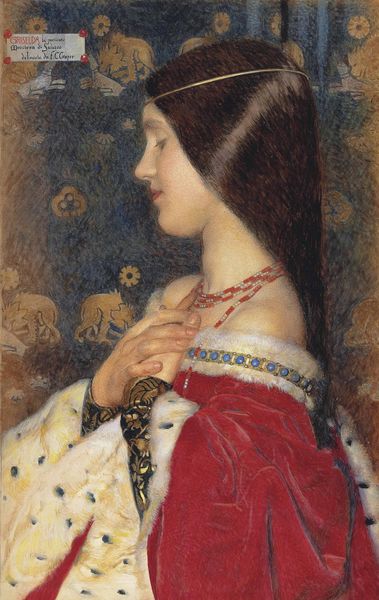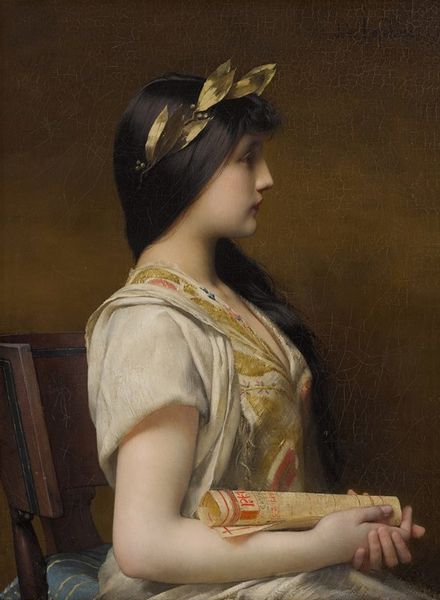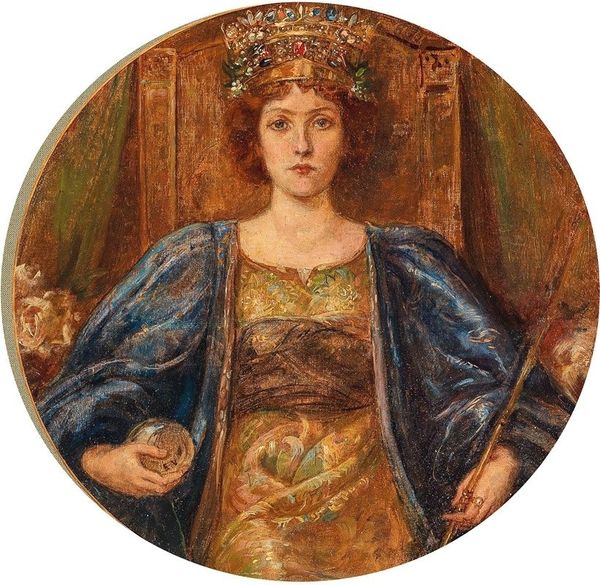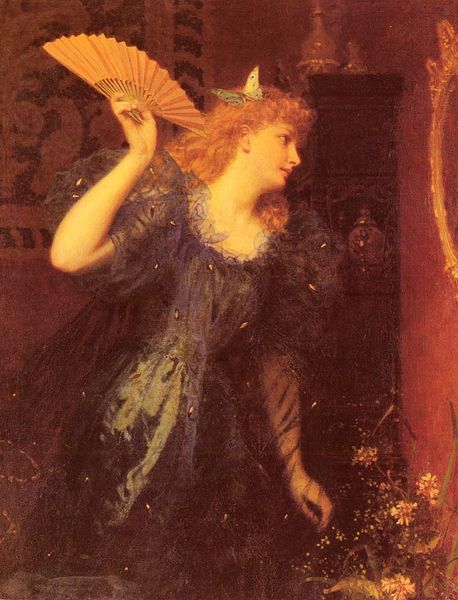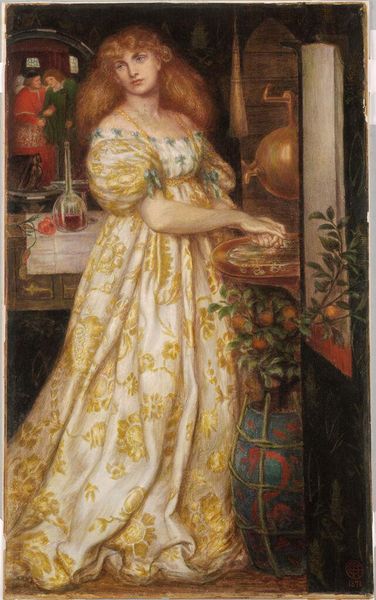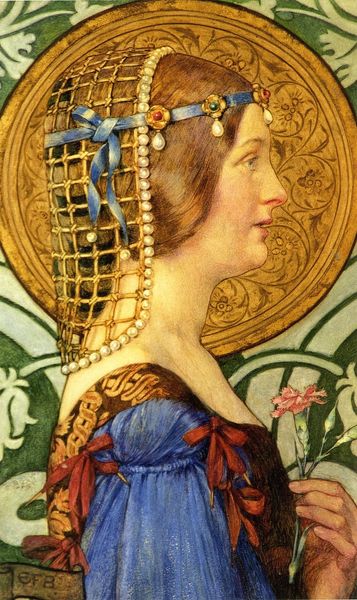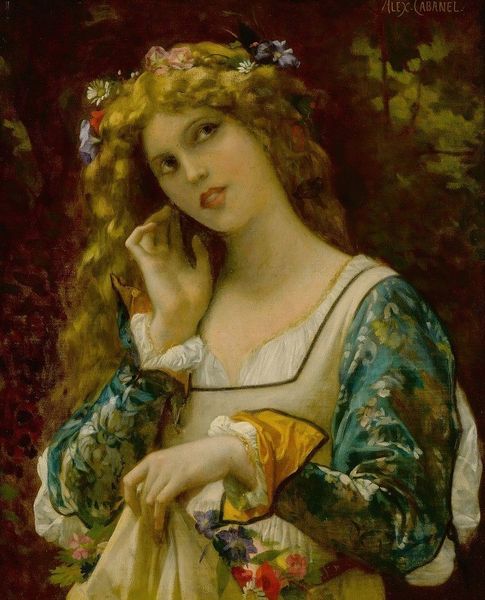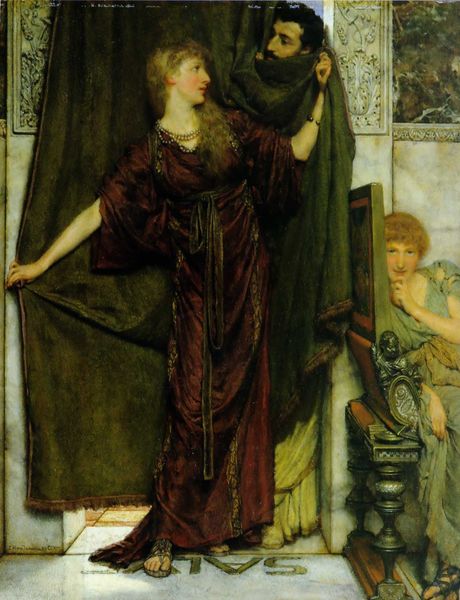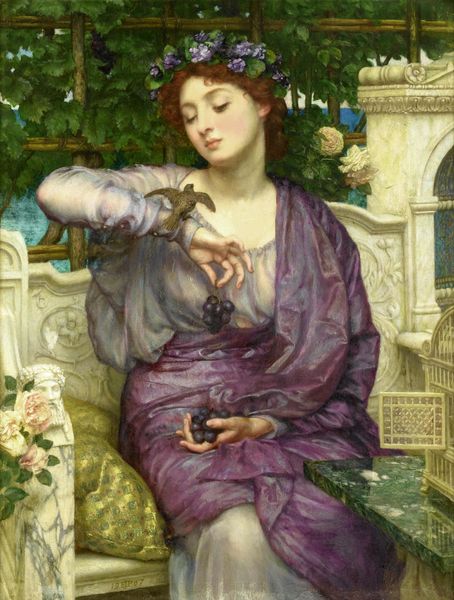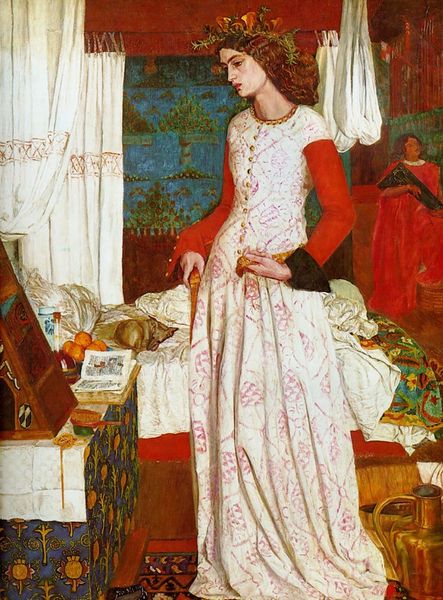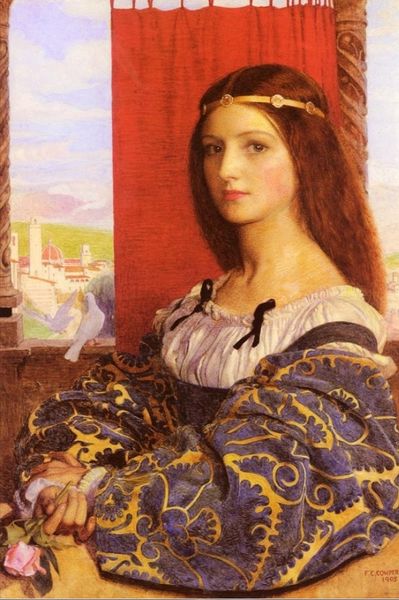
painting, oil-paint
#
portrait
#
gouache
#
painting
#
oil-paint
#
oil painting
#
coloured pencil
#
romanticism
#
history-painting
#
academic-art
#
mixed media
#
realism
Copyright: Public domain
Lawrence Alma-Tadema painted 'A Crown' at the height of the British Empire, a period when the art world saw a revival of classical styles and themes, celebrating beauty and idealized visions of the past. In this painting, a woman, dressed in classical attire, presents a crown on a cushion. The image creates meaning through visual codes that reference ancient Greece and Rome, cultures that were admired for their democratic ideals and artistic achievements. Yet, this idealized vision contrasts with the social realities of Alma-Tadema's time in Victorian Britain, marked by vast social inequalities and a rigid class structure. Was Alma-Tadema offering a subtle commentary on the role of the monarchy and aristocracy, or was he simply indulging in an escapist fantasy? To answer that, we need to delve into the social and institutional history of the late 19th century. What was the role of art institutions in shaping public taste? How did artists navigate the expectations of their patrons and the art market? By exploring these questions, we can gain a deeper understanding of the complex interplay between art, society, and power.
Comments
No comments
Be the first to comment and join the conversation on the ultimate creative platform.
